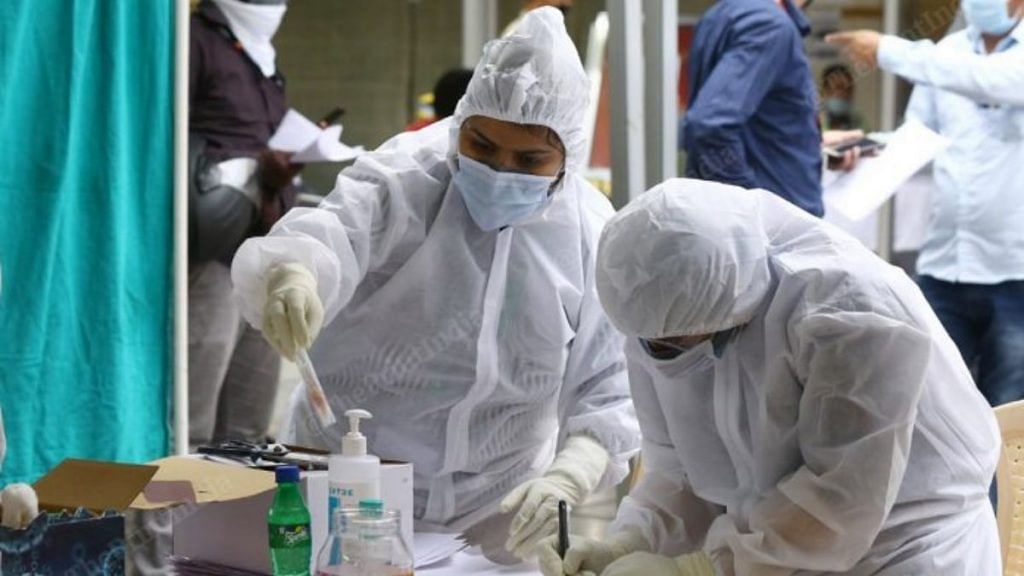New Delhi: While India has managed to bring its R value, a key indicator of how fast an infectious disease is spreading, to below 1, contact tracing data from Tamil Nadu and Andhra Pradesh highlights the importance of monitoring another epidemiological value — the K factor.
While R denotes how many people are likely to get infected from one coronavirus patient, K or dispersion parameter ‘fine-tunes’ the impact of R, explains Aritra Das, a Kolkata-based independent epidemiologist.
“For example, if R is 2 — it means that on average one person can spread the infection to two people,” Das told ThePrint. “But this is an average, it does not mean that every sick person will necessarily infect two more people.”
“How many people get infected also depends on the geography, the types of events the person attended and other factors that govern the spread of the disease,” he said.
The K parameter
The K parameter tries to model how many ‘superspreader events’ may have caused the spread of the infection.
A recent study published in the journal Science analysed contact tracing and testing data from Tamil Nadu and Andhra Pradesh.
The study showed that superspreading predominated in the two states — with 80 per cent of Covid-19 cases traced back to 5 per cent of the infected individuals. The K factor in these states was estimated to be 0.51 in the study.
If K is less than 1, it denotes that one or two super spreader events caused a large number of infections, Das explained, adding that a higher K factor shows that the spread of the disease is more uniform.
The K factor thus becomes an important parameter for public health policy makers to take into account.
“If there are a few events causing more infections, then the policies should focus on containing the disease within a geographical location,” Das said. “However, if the spread is more uniform — that is K between 5-10 — then the approach should be more on testing and tracing, rather than containing it.”
The data from the study reiterates that preventing super spreader events and avoiding large gatherings can help curb the spread of Covid-19.
Also read: India’s Covid R value steady at 0.88, but many states see rise in infection rates
